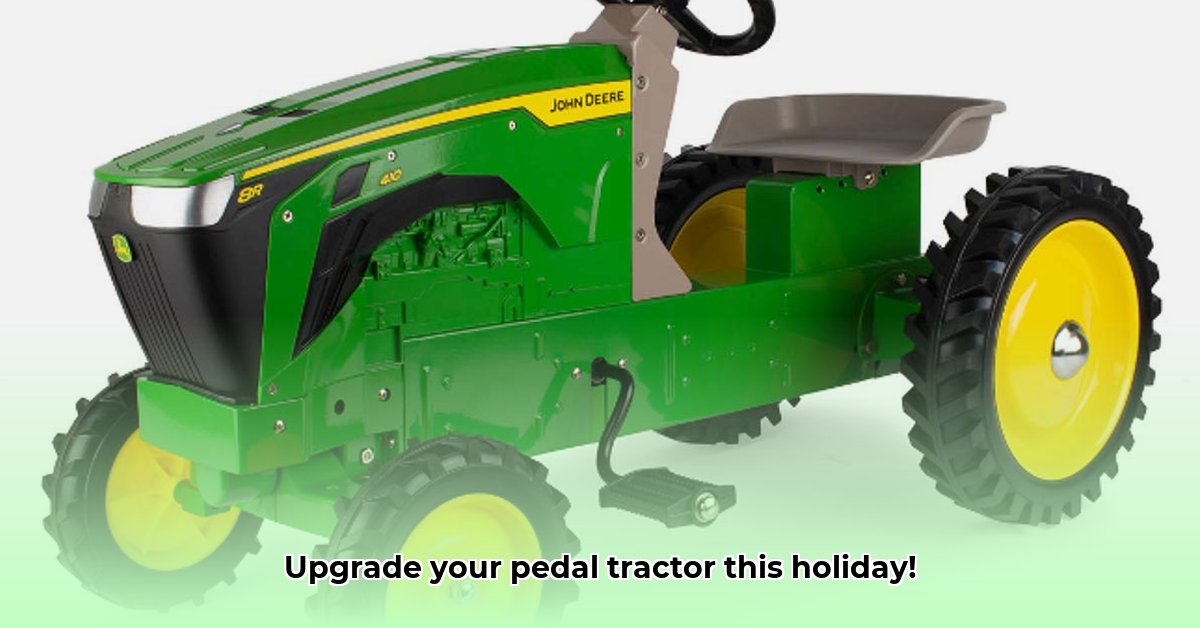
The Pedal Tractor Parts Market: A Seasonal Perspective
The market for custom pedal tractor parts is a niche but passionate arena, experiencing steady growth fueled by nostalgia, restoration projects, and the creation of unique custom pieces. However, acquiring the right parts, especially during the peak holiday season, presents significant challenges for both suppliers and collectors. This article analyzes the current landscape, highlighting key supply chain bottlenecks and offering actionable insights for all stakeholders. For additional resources on vintage tractor parts, check out Steel Tractor Toys.
Market Segmentation: Custom vs. Mass-Market
The pedal tractor parts market is clearly segmented into two distinct areas: mass-market replacement parts and custom, specialized components. Mass-market suppliers, like John's Pedal Tractor Parts, focus on readily available, typically cast metal components for common tractor models, catering to straightforward repairs and restorations. Custom part providers, such as PedalTractor.com1, specialize in unique, hard-to-find items, including reproductions of antique pieces and highly customized components. This distinction significantly impacts sourcing strategies and customer expectations. Are you searching for a common replacement part or a highly specialized, custom piece? This question dictates the approach to your search.
Supply Chain Analysis: Navigating Holiday Hurdles
The holiday season intensifies demand, creating significant supply chain challenges. Mass-market suppliers may experience shipping delays due to reliance on standard carriers (UPS, USPS) during peak shipping seasons. Custom part providers, often relying on less structured communication channels (phone, email), can encounter inefficiencies in order processing and inventory management. A lack of comprehensive, real-time online inventory information across the board exacerbates these issues, making timely sourcing a major obstacle for buyers. This creates a significant constraint for efficiency and customer satisfaction. How can these challenges be addressed to optimize the buying and selling experience?
Pivotal Points:
- Increased Holiday Demand: The holiday season leads to a significant spike in demand, straining existing supply chains.
- Communication Barriers: Inefficient communication channels hinder timely order processing and inventory updates.
- Inventory Transparency: Lack of real-time online inventory information creates uncertainty for buyers and delays procurement.
Actionable Insights: Strategies for Success
The following recommendations address both short-term (within one year) and long-term (3-5 years) challenges and opportunities for all stakeholders.
1. Custom Part Makers:
- Short-Term (0-1 years): Implement user-friendly online stores with robust inventory management systems. Explore lean manufacturing techniques to speed up production. Collaborate with other custom part makers to share resources and expand capabilities.
- Long-Term (3-5 years): Expand product lines to cater to a wider range of models and preferences. Implement targeted marketing campaigns. Explore 3D printing to create parts on-demand. Develop strong relationships with key material suppliers.
2. Mass-Market Suppliers:
- Short-Term (0-1 years): Optimize shipping processes; explore faster shipping options; invest in improved customer service and communication; develop user-friendly online inventory tracking.
- Long-Term (3-5 years): Invest in robust inventory management systems; explore international sourcing options; consider developing a private-label parts line and bolster your CRM system to increase customer retention.
3. Collectors/Restorers:
- Short-Term (0-1 years): Diversify sourcing channels; plan purchases in advance; join online communities to connect with fellow enthusiasts and potential parts suppliers.
- Long-Term (3-5 years): Attend collector events; build relationships with reliable suppliers; expand personal restoration expertise to improve decision-making and sourcing efficiency.
Conclusion: Building a Resilient Pedal Tractor Parts Ecosystem
The custom pedal tractor parts market presents unique challenges and rewards. By addressing supply chain inefficiencies, improving communication, and fostering stronger relationships among stakeholders, the sector can enhance its resilience and deliver a more satisfying experience for all involved. Further research focusing on predictive demand modeling and innovative manufacturing techniques could further optimize the market's efficiency and growth.